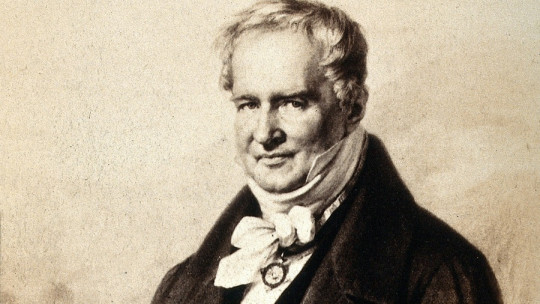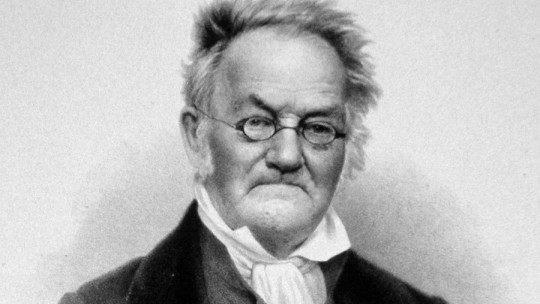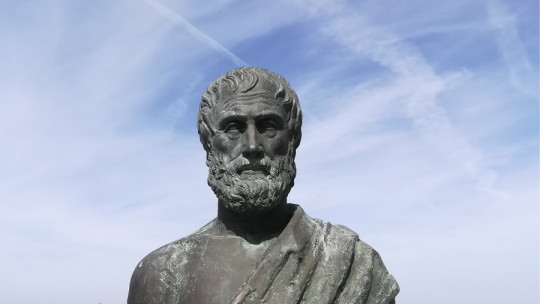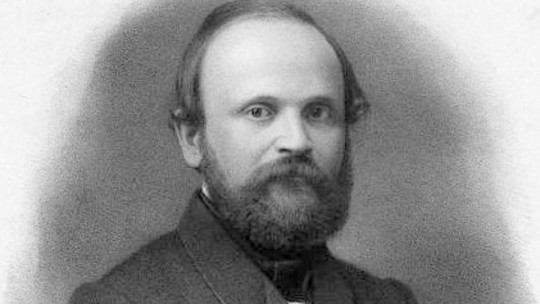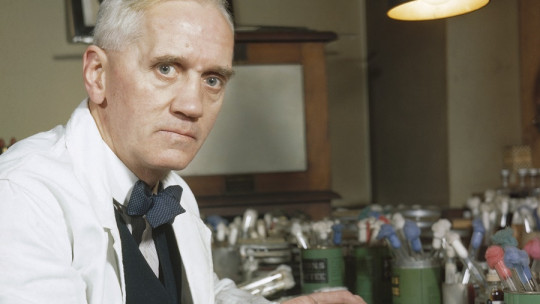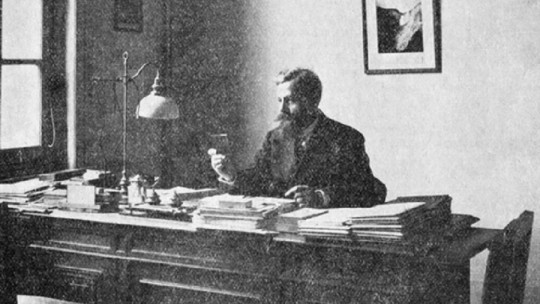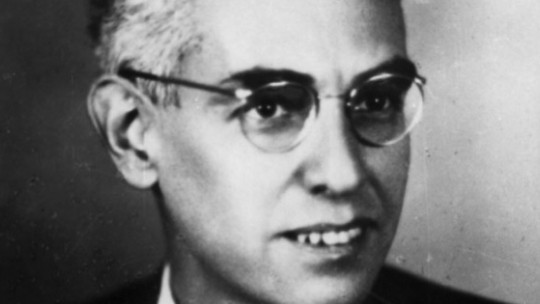Although Alexander von Humboldt cultivated a whole range of sciences, his main legacy was the consolidation of geography as a science.
Below we can discover more details about his life, through a biography of Alexander von Humboldt in which you will learn about his great contributions in the different disciplines in which he collaborated throughout his career.
Brief biography of Alexander von Humboldt
Alexander von Humboldt was born in 1769, in the city of Berlin, at that time belonging to the Kingdom of Prussia His father, Alexander Georg, was a prestigious military man, serving under the Prussian monarch, Frederick II the Great. Her mother, Marie Elisabeth, came from a family with a good economic and social situation, widowed in addition to a first marriage, which had provided her with an important inheritance.
An example of the high position of the von Humboldt family is the good relationship they maintained with the royal family, to the point that the heir to the throne of Prussia himself was the godfather of little Alexander von Humboldt, a fact that was obviously not common. and symbolized the importance that this family had in the Prussian high society of the time.
The von Humboldt couple had another son, Wilhelm, who in the future would be, like his brother, a man of prestige, cultivated in different sciences, who would also leave a brilliant legacy. Therefore, it is evident that an intellectual environment prevailed in Alexander von Humboldt’s house that favored the two brothers to reach the highest levels in their respective fields.
In fact, Alexander was taught in his own residence, which was none other than Tegel Castle It was his father who personally chose the educators of his children, so he selected the most prestigious, enlightened teachers. Joachim Heinrich Campe, one of Alexander von Humboldt’s tutors, deserves a special mention, who awakened in him curiosity about the natural sciences, especially zoology, botany and geology.
Unfortunately, Alexander and Wilhelm’s father died when they were ten and twelve years old, respectively. Therefore, his mother was widowed for the second time. She was in charge of managing the family economy so that her children continued to receive the best education possible, even if this meant giving up certain luxuries that, due to her position, she could have afforded.
Alexander von Humboldt Not only did he stand out very early in the scientific subjects he learned, but also in the arts, since he was instructed in them to be able to learn painting and drawing techniques , which would help him to exhibit some of his creations at no less than the Berlin Academy. This talent would also later be observed in the quality of the illustrations he created for the notebooks that chronicle his journeys.
Youth and first trips
Although Alexander von Humboldt initially wanted to follow in his father’s footsteps and become a prestigious military man, his mother advised him not to do so. When he reached adulthood, he attended the University of Frankfurt to receive financial education over the course of a semester. Later he would enroll at the University of Göttingen, which his brother Wilhelm was already attending, although learning other disciplines.
At this stage of his life, Alexander had the opportunity to learn from Georg Foster Foster was a German naturalist who had been part of the crew of James Cook himself, one of the most important English explorers in history, on his second voyage.
Thanks to this friendship, he would soon begin a hobby that would mark Alexander von Humboldt’s career forever: research trips. In this way, he would embark together with Georg Foster on a journey through the waters of the Rhine until reaching Holland, and then continue his journey through France, to English lands.
Once in England, Alexander was able to meet Sir Joseph Banks, another of James Cook’s companions on his adventures , who was also the president of the Royal Society. Humboldt was able to access the plant samples that Banks had collected during his travels through the seas of the southern hemisphere, which definitely convinced him to dedicate his life to exploration and research.
As a result of this trip, Alexander von Humboldt was able to publish his first work, “Mineralogical Observations on Various Basalts of the Rhine River.” Once he was clear about what he wanted to dedicate his career to, he decided to train to be a great explorer In Hamburg he had the opportunity to learn different languages and specialize in commerce and also attended the Freiberg School of Mines, where he acquired the knowledge about geology that he needed. Not only that, he also trained in astronomy and anatomy.
Travel through Europe
After completing his training at the mining school, Alexander von Humboldt received a position to lead the management of gold mines in Bayreuth and Fichtel His work was excellent and he managed to significantly increase the extraction of this mineral. At the same time, he was a strong defender of the miners and even took charge of creating a school so that they could receive the best possible training and thus be able to work safely.
His work in the mines allowed him to publish a work on the botany of the area that reached the hands of Johann Wolfgang von Goethe, who immediately wanted to contact Humboldt. Thus began a close friendship and scientific collaboration between both intellectuals. These collaborations led Alexander to frequently visit the University of Jena, where his brother was also there.
He entered the circle of Weimar classicism, where some of the most brilliant minds of the time were found He continued traveling through Europe and meeting other prestigious scientists, with whom he shared knowledge. These trips took him to Vienna, Switzerland or Italy. At this time, 1796, the mother of the von Humboldt brothers died and it became clear that none of them had a good relationship with her, since they did not attend her funeral.
Travels through America
Beginning in 1799, Alexander von Humboldt’s great voyages through America began He practically dedicated the rest of his life to scientific explorations on this continent. He moved to Madrid to ask the Spanish authorities for official permission to visit Spain’s overseas dominions. Since he did not need financing, he had no problems obtaining said authorization and thus he embarked on his first great adventure, heading to America, stopping in Tenerife.
Although they were originally headed to Havana, Cuba, an outbreak of typhoid fever forced the ship’s captain Pizarro to change plans and land in Cumaná, Venezuela. Alexander von Humboldt settled in the Aragua valley to observe the crops that were being grown and in fact he was the first to consider the repercussions that the exploitation of land by man could have, originating the idea of climate change.
Later began an expedition through the waters of the Orinoco River for four months, discovering indigenous tribes in remote places and truly exotic animal species and of scientific interest such as the dangerous river eels, which even killed some of the horses with their electric shocks. Humboldt was a great student of electricity and magnetism, so this animal was of immense importance for his research.
In 1800 he went with his team to Cuba, beginning a great series of scientific works in these lands. His work was so important that he is considered the second discoverer of the island. After a brief stay in Europe, he would return to America, this time to visit the Andes, Ecuador, Peru and finally, New Spain, today Mexico. The year was already 1803. They toured the territories of the viceroyalty until they reached Mexico City, a place that shocked Alexander.
He inspected the Valencian silver mine in Guanajuato, which was the mine that extracted the most material for the Spanish Empire during that time. He did a tremendous analysis of the functioning of this infrastructure. He also dedicated efforts to studying the pre-Columbian cultures of these territories, especially regarding cultural and artistic manifestations. The Political Essay on the Kingdom of New Spain was the great compilation of these investigations.
In 1804 he was already in the United States, even collaborating with President Thomas Jefferson, who was also a scientist He made a report about the borders of Louisiana, a territory recently acquired by the United States. That same year, Alexander von Humboldt would return to Europe, after five years of research in America.
Last years and death
Those of America would not be Alexander’s only great voyages, many years later, In 1829, he would begin a journey through Russia, covering more than 15,000 km in just over six months He made reports about the mining possibilities of the area and also took the opportunity to investigate organisms from remote places in the Siberian steppe.
Alexander von Humboldt would die after a long life, at the age of 89, in 1859, in Berlin, the same place where he was born.

